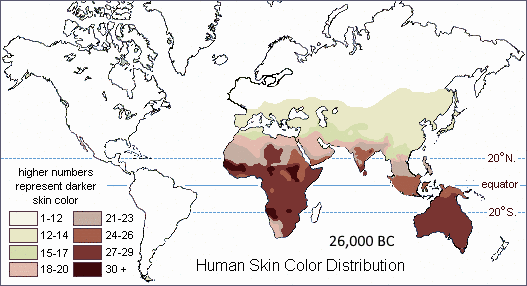Human Adaptation to Solar Radiation During Earth's Magnetic Weakening

A recent study has shed light on how early humans adapted to heightened solar radiation exposure caused by a significant weakening of Earth’s magnetic field approximately 41,000 years ago. This period, known as the Laschamps Excursion, saw the magnetic field’s strength plummet to below 10% of its current levels, exposing the planet to increased harmful solar radiation and altering the environment in ways that may have influenced human behavior and survival strategies.
During the Laschamps Excursion, the magnetic field fractured into several weak poles scattered across the globe, leading to a breakdown of the protective magnetosphere. This change allowed more ultraviolet (UV) radiation from the sun to penetrate the atmosphere, posing risks such as skin damage, eye injuries, and potential genetic defects. According to Dr. Emily Roberts, a geophysicist at the University of California, Los Angeles, "The weakening of the magnetic field would have significantly disrupted the natural shielding effect that protects living organisms from harmful cosmic rays."
The study, published in the journal Science Advances, combined climate models with archaeological evidence to investigate the impact of this magnetic shift on early human populations, including both Homo sapiens and Neanderthals. Researchers observed an uptick in the use of caves for shelter and the application of ochre pigments on the skin around this time, behaviors that may have provided some protection against the increased radiation. Dr. Sarah Johnson, an archaeologist at Harvard University, noted, "The shift in living patterns suggests a remarkable adaptability in early human populations, possibly driven by environmental threats."
The research team, led by Dr. Mark Thompson from the University of Cambridge, emphasizes that while the Laschamps Excursion may not have directly caused the extinction of Neanderthals or significant evolutionary changes, it likely influenced innovative behaviors and survival strategies. They argue that understanding these adaptations can provide insights into how current societies might respond to similar cosmic events in the future.
Historically, Earth’s magnetic field has fluctuated in strength and configuration, with previous events documented through geological records. Such fluctuations are not uncommon; however, the implications for modern civilization could be profound, especially as society becomes increasingly reliant on technology vulnerable to space weather phenomena. According to a report by the National Aeronautics and Space Administration (NASA) published in 2020, disruptions in the magnetic field can have cascading effects on satellite operations, electrical grids, and even communications.
Given the potential for future magnetic field anomalies, researchers are calling for more interdisciplinary studies that integrate space weather phenomena into environmental history. This could not only enrich our understanding of past human behavior but also inform future preparedness strategies. Dr. Thompson asserts, "By studying past responses to cosmic events, we can enhance our resilience against the increasingly complex challenges posed by our changing environment."
In conclusion, the Laschamps Excursion represents a pivotal moment in the history of human adaptation to environmental challenges. As scientists continue to refine their models and explore archaeological sites for further evidence, the lessons gleaned from our ancestors may prove invaluable in navigating the uncertainties of the future. Understanding how early humans interacted with their environment during this tumultuous time offers a lens through which we can view our own vulnerabilities in the face of cosmic forces.
This study not only highlights the resilience of early humans but also serves as a reminder of the intricate connections between cosmic phenomena and terrestrial life. The ongoing research into these historical events encourages a broader dialogue about the potential impacts of similar occurrences on contemporary society, particularly as humanity grapples with the challenges posed by climate change, technological dependence, and environmental degradation.
Advertisement
Tags
Advertisement





